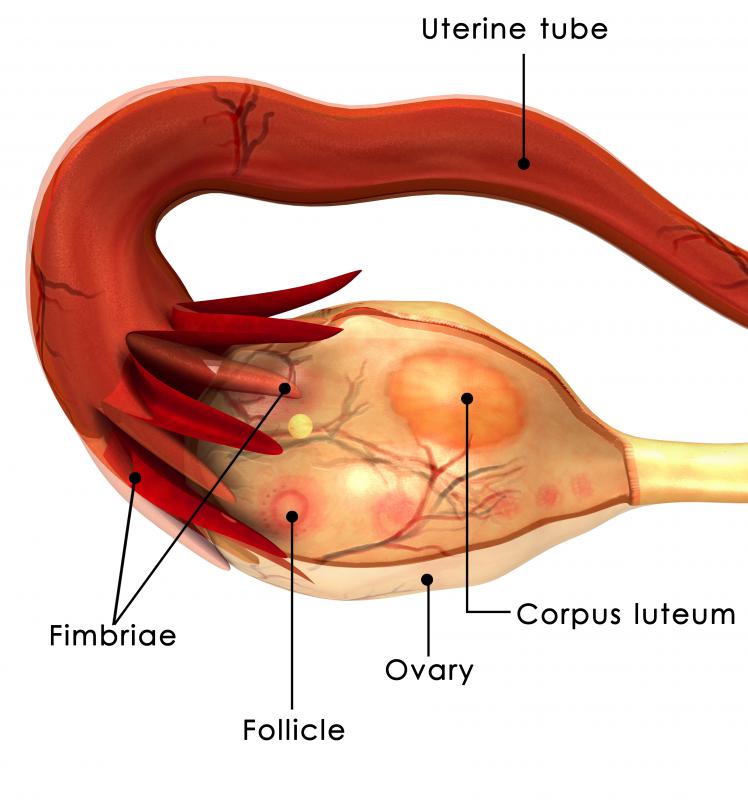At WiseGEEK, we're committed to delivering accurate, trustworthy information. Our expert-authored content is rigorously fact-checked and sourced from credible authorities. Discover how we uphold the highest standards in providing you with reliable knowledge.
What is an Oophorectomy?
Oophorectomy is surgical ovary removal, which may be necessary for a variety of reasons. The oophorectomy may include one (unilateral) or both (bilateral) ovaries depending on need, and the surgery is very often part of a hysterectomy, or removal of the uterus. About 50% of hysterectomies include oophorectomies, but there are reasons why removing the ovaries alone might be justified, and reasons why women choose not to have ovary removal when they have a hysterectomy.
Some reasons that women could require an oophorectomy include if they are greatly at risk for ovarian cancer. A woman could choose to remove the ovaries so cancer doesn’t occur. This is a matter of some thought, because it does the change the body, reducing estrogen supplies and eliminating chances of conceiving a baby through normal means. Some women address this by saving eggs prior to having the procedure, which can then be fertilized and used if the uterus remains.

Getting rid of hormones, which are normally beneficial, may be part of the point of having an oophorectomy. Women at high risk for breast cancer might choose this radical option to reduce estrogen supply, which may increase breast cancer risk. Usually women who make this choice have a strong family history or genetic inclination toward breast cancer.

Other potential reasons for removal could include long-time pain due to conditions like endometriosis. Alternately severe polycystic ovarian disease may be an indication for a bilateral or unilateral oophorectomy. Clearly presence of cancer in the ovaries would indicate their removal too.
Downsides exist to this type of surgery. These could include premature menopause, potentially premature aging, greater risk for cardiovascular disease, and most importantly, a significant chance of developing osteoporosis. Women are usually put on medications that will help keep bones from growing more fragile. Some women may also take hormone replacement therapy.

There are several different ways an oophorectomy may be performed. Very often people can expect to spend at least one night in the hospital and sometimes a couple of days. Very occasionally this surgery is performed on an outpatient basis. Yet the usual method for removing the ovaries is through an incision in the stomach, and it does require general anesthesia. Doctors will give specific advice, but patients can probably expect to have some blood testing the day before the surgery and to be asked not to eat or drink anything for about 12 hours before the surgery.

The first few days after an oophorectomy may be uncomfortable, and women should check incisions for signs of infection including unusual warmth, hotness, redness, red streaks or pus. Doctors usually make available pain medication if needed. Many people are able to return to full activity within a couple of weeks, but some may need a little longer to recover. Usually by the six-week mark, an uncomplicated surgery is followed by full recovery.
AS FEATURED ON:
AS FEATURED ON:
















Discuss this Article
Post your comments